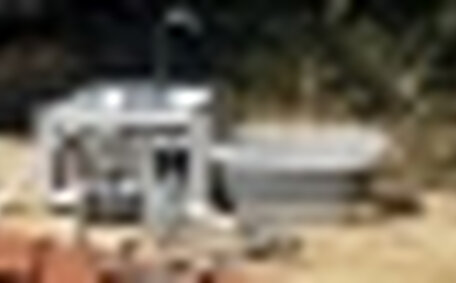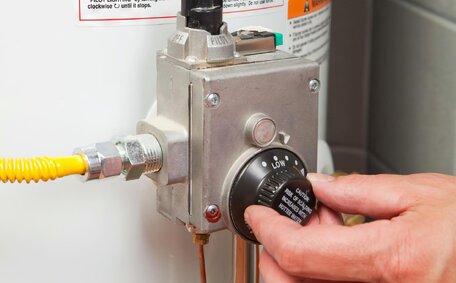Guide to Pipe Relining Preparation
Pipe relining, a trenchless pipe repair method, rehabilitates damaged piping systems without extensive excavation for total pipe replacement.
It involves installing a new pipe lining inside the host pipe using epoxy resin or similar materials. With pipe relining, Relining fortifies pipelines, addressing issues like fissures, seepages, clogs, and invasive tree roots effectively.
The pipe relining process has several key benefits compared to traditional pipe replacement:
- Less invasive – Eliminates extensive digging or cutting into surfaces, popular in Australia and New Zealand.
- Minimal surface disruption – Driveways, landscaping and infrastructure are left undisturbed.
- Longer lifespan – Epoxy resins utilised during the sewer repair forge a pipeline that’s anticipated to function beyond 50 years.
- Cost-efficient – Pipe relining eliminates the need for heavy machinery, reducing labour costs significantly.
- Faster completion - Insertion and curing of the liner is quicker than replacing entire sections of pipe.
Pipe relining serves to not only restore but fortify existing pipes, rendering them stronger than standard PVC options and more cost-effective. The seamless epoxy barrier rejuvenates the entire sewer system, reinforcing the integrity of the pipe work and guarding it against common woes, outperforming traditional methods.
When to Consider Relining Your Pipes
Pipe relining is preferable to full replacement in several scenarios:
- Your damaged pipes are cracked or weakened - With relining, there is no need to disturb your garden or driveway; we can efficiently rectify cracks and holes.
- You have a blocked drain or roots in pipes - To combat this, we harness our expertise with a robotic cutter and water jetting to clear away obstruction and roots before proceeding with the relining.
- Pipes over 50 years - Relining extends ageing pipes’ lifespan by 50+ years.
- You are renovating and want less invasive pipe repairs - Pipe relining offers a less intrusive solution, as it requires no trench excavation, achieving restoration with minimal disturbance.
- Gas hot water pipes pressure issues indicate pipe deterioration - The seamless epoxy barrier created by relining restores water flow.
If you’re concerned that your plumbing requires attention, please contact us for guidance; our advanced drain camera technology guarantees accurate diagnostics. Our in-depth internal drain cameras are also at the ready to meticulously investigate your plumbing issues and assess if pipe relining is fitting for your situation. Leverage our know-how to receive a no-obligation free quote, granting you clarity on the pipe relining cost tailored to your precise plumbing requirements.
Inspecting Pipes with CCTV Cameras
Before commencing drain relining, a CCTV camera inspection is critical. Our advanced leak detection involves feeding high-resolution cameras on flexible cables through your plumbing to diagnose the current state and pinpoint problem areas.
CCTV inspections reveal the compromised areas within the pipes and confirm that there are no oversights in our repair strategy for the damaged sections. The critical details gathered crisply outline what needed done, allowing for a targeted repair strategy:
- The exact locations of cracks, holes, blockages from roots or debris
- Severity of corrosion, fractures, offset joints or other defects
- Measurements for ordering materials and planning liner installation
The recorded visuals allow clients to can see the particular troubles affecting their plumbing, deepening their comprehension. Our experts, with their attention to detail regarding pressure ratings and circulation, showcase their proficiency in devising bespoke solutions.
Without CCTV diagnosis, relining repairs would be incomplete. What we do is tailor lining thickness, length, textures, and curing times to each pipe’s needs. Comprehensive inspections allow robust rehabilitation of drainage assets.
Cleaning and Preparing Pipes
Thorough cleaning is essential prior to relining pipes. To prepare for pipe relining, our skilled technician employs a powerful water jetter to meticulously cleanse the interior, removing any obstructions or residue from your drain pipe. This prevents potential issues that could damage your pipe liner’s ability to adhere correctly.
We scrape any tubercles and protrusions with rounding tools. This method smooths cut sections and corrects misalignment before inserting the liner. Any remaining contaminants can prevent proper bonding.
We pass a compressed air nozzle through the section of plumbing pipe, ensuring it’s perfectly dry for optimal liner adhesion. This dries the surface for the liner’s resin to cure evenly. Neglecting this makes sections prone to delamination or bubbles forming behind the barrier.
In summary, comprehensive cleaning involves:
- High-pressure water jetting
- Scraping interior walls
- Removing roots/debris
- Smoothing misaligned areas
- Drying all moisture
These measures ensure that the lining we introduce to the pipe can achieve solid bonding and sustained performance. Our team’s very professional approach ensures that the repairs we provide withstand decades of service.
Materials Needed for Relining
The new lining materials used in sewer pipe relining vary depending on the pipe type and extent of the damage. The requisite components, chosen by our adept team, cater to the extent of damage ensuring flawless performance within existing pipe infrastructures:
- Felt or fibreglass liners soaked in epoxy resin - These are custom sized to each pipe length and compressed for insertion.
- Epoxy resin - Specially formulated to cure in wet conditions and bond to host pipe walls.
- Spiral winding tools - Guide resin-soaked liners into pipe and expand them outward.
- Compression balloons - Used for round pipes, inflated to press the liner into circular form.
- UV lights and hot steam - Cure the resin evenly and accelerate hardening times.
Our team does pipe relining assessments to ensure the use of compatible liner materials for each client’s piping structure. Steel and iron sewer pipes undergo abrasive blasting beforehand while pvc pipe, concrete and clay pipes rely more on the resin bonding strength.
The liner we’ve installed offers a sturdy resolution that can used seamlessly for addressing a variety of pipe relining issues, such as fissures and seepages. The main outcome is restored pipes lasting 50+ years.
Installing the New Pipe Liner
After an exhaustive cleaning and prepping routine, we reline the conduits, poised to commence the relining; our proficient team is equipped with precision. An inverter drum is utilised, which houses the compressed liner that came out smoothly as it enters the host pipe.
The epoxy resin-saturated liner presents a cost-effective alternative to traditional pipe repair methods. The installation involves using compressed air to propel it through your existing pipes, ensuring uniform outward pressure. This thorough method ensures complete adherence to internal pipe surfaces, forging a robust bond and the cure necessary to confirm we got job done accurately.
Skilful guidance of the liner is essential to navigate bends, junctions, or partially collapsed sections. The team did an excellent job, meticulously monitoring every phase with CCTV and fine-tuning air pressure and tension as needed.
Once correctly inserted into the pipe, the liner is held firmly until the resin sets; this is how we ensure the job is done thoroughly. This provides a permanent solution, sealing all cracks and leaks completely. Post-installation CCTV checks validate the quality work and identify any minor adjustments needed.
If installation fails to sufficiently seal damaged areas, it jeopardises the lining’s longevity. Leveraging our extensive know-how, the team adeptly manages the relining project from start to finish, safeguarding the functional longevity of your pipes for years to come.
Curing the Liner
Once the relined pipe is installed, the final vital step is curing the epoxy resin to harden it completely. Controlled curing conditions accelerate the process which normally takes 12-24 hours at ambient temperatures.
Our process initiates hot water or steam circulation to harden the new pipe within old structures snugly, with precision temperature control between 60-80°C. Regulated heat ensures the resin cures without damage. Alternatively, we deploy UV light emitters if water/steam methods are impractical for the pipe type.
Observations commence promptly within an hour of initiating the curing process, continuing until the resin forms a sleek, even coating. There’s now a fully bonded epoxy barrier integrated with the host pipe, encapsulating every crack and imperfection. Post-installation integrity tests validate long-term performance.
For your drain pipe system with large diameter pipes, spiral-wound liners offer dependable structural rehabilitation. The PVC profile, which can be used across various applications, is wound into a spiral form onsite with interlocking edges. After resin-soaking, the liner is smoothly installed into position, Consider hiring professionals for future projects to ensure proper inflation against the pipe walls if required.
Addressing the resilience of sewer and storm water systems, our advanced spiral and spot welded joints offer instant defence against pressure during the hardening stage. This solution renews critical pipelines with minimal surface disruption.
Our expertise guarantees that every liner, methodically cured, can be used on your property for durable repairs. Thermal or UV regulated hardening combined with compatible resin materials will continue functioning effectively for decades post-installation.
Finishing Touches and Quality Checks
After curing the installed liner, We conduct final inspections with CCTV cameras, maintaining the consistency that characterises our pipe relining process. This confirms our high-quality workmanship and that no leaks or defects remain post-sealant application. We inspect the liner’s full length for wrinkles, dry spots, or poor bonding.
If minor improvements are needed, we re-enter and have cleaned up the interior to smooth edges or apply touch-up resin coatings. More significant flaws may require repairing a damaged section pipe to guarantee performance. Our goal, through the work carried out, is restoring pipes to better-than-new condition.
Upon completion, we provide a detailed explanation of the procedures and share repair footage. Your feedback is highly recommended to help us enhance our service standards.
Customers are satisfied with the comprehensive repair of their pipes and our team’s approachable, friendly manner.
Longevity and Maintenance of Relined Pipes
One of the biggest advantages of pipe relining is the exceptional lifespan it provides. While traditional replacement piping typically lasts around 25 years, epoxy-lined pipes often remain intact for over 50 years.
The seamless barrier of relining protects original pipe materials from further corrosion and wear. Periodic CCTV inspections validate performance, but minimal maintenance is required compared to traditional piping.
We recommend households exercise sensible drain care – avoid disposing of fats/oils down sinks, use basket strainers for debris, and promptly contact a plumber if you suspect leaks or defects. Tree roots can still intrude through cracks in exterior piping, so be vigilant for reduced drainage flow.
Overall, quality epoxy relining solves plumbing problems by eliminating the need for excavation or replacements for decades. Liners offer lasting protection with less maintenance than new piping, which requires more attention due to joint fittings and potential material fatigue.
The detailed consultation I received on trenchless pipe renewal’s longevity was enlightening. We support our installations with long-term warranties and provide thorough explanations of the durable products used.






